título: Everything Keeps Dissolving - Conversations With Coil
nº de páginas: 600
isbn: 97819113689348
data: 2023
1ª Edição / 1st Edition
Everything
Keeps Dissolving – Conversations With Coil
Nick Soulsby
Autografado pelo autor em 16.02.2023
1ª
Edição
Strange
Attractor Press
Limited
Edition
Hard
Cover
350
copies
About
This Book’s Title:
Around
the time of the first Coil Royal Festival Hall performance in April 2000, John
Balance was speaking to the musician, journalist, and Sentrax Corporation label
boss, John Everall, who was undergoing his own struggles with alcohol and
mental health challenges. ‘EVERYTHING KEEPS DISSOLVING’, said Everall, a phrase
which clearly resonated with ^Balance, who used it as the title of the
recording of the extended drone piece performed at the Royal Festival Hall, and
at Sonar in Barcelona the same year.
Everything
Keeps Dissolving: Conversations With Coil
By Nick
Soulsby
First
published by Strange Attractor Press 2023
Text ©
The Authors
Cover by
Tihana Sare, layout by Maia Gaffney-Hyde
Typeset
in Aichel, Acuta and Komet
Hardcover
Tem
sobrecapa
ISBN
97819113689348
Strange
Attractor Press
BM SAP,
London,
WC1N
3XX, UK
Distributed
by The MIT Press, Cambridge, Massachusetts.
And
London, England.
Introduction
Nick
Soulsby
Significant
time immersed in the voices of Coil has provided various thoughts perhaps woth
sharing.
Remembrance
of childhood is not neutral: we sift and discard masses of material from the 5,475 days lived
out by age 16, choosing what to present to others, what is recalled but hidden
from others’ sight, and what goes entirely unrecalled. In Balance’s case, he
was uncharacteristically discreet regarding the backdrop of his childhood.
Divorce was not without social stigma in 60s Britain, nor his parental
separation a nothing to any child. Later statements that he sometimes slept in
a dog basket and would bite the ankles of his mum’s suitors do not suggest it
was easy. Remarriage and an armed forces stepfather led to a peripatetic
upbringing including nine schools before age 11. Seeing Coil perform in 2004, I
recall Balance on stage recounting a startling tale in which his stepfather
held him over the edge of one of the Ruhr dams, then hit him for crying about
it. While indicating pressure over behavior deemed effeminate, Balance’s
recollection spoke also to his defiance of a repressed and regimented vision of
male identity.
Instead
of dwelling on his family, however, Balance spent his adulthood recounting
tales such as his birth in the grounds of an asylum for the shellshocked
soldiers; his worship of the moon from age seven; of an extreme bout of measles
resulting in three weeks lying in a dark room: ‘… the sort of “shamanic type”
illnesses that they say happen in people’s lives which change your perception
of the world forever.’ Of taking magic mushrooms, age 11; of writing Alex
Sanders, ‘King Of The Witches’, at 12; of dabbling teachers sharing occult
practices; of sexual activity with other pupils; of a letter from the
headmaster stating he was ‘obsessed with the occult and could he desist from
astral projecting into other people’s heads.‘ A CV used as press material in
Coil’s early days mentioned ‘psychiatric treatment after attempting to push a
piano down three flights of stairs and strangling the son of a United Nations
diplomat… Seduced by a 70-year-old cook… scandal with son of famous Disney
actor… Brush with police after placing five pigs’ heads face up in the public
lavatories.’
While
doubtlessly delighting in spinning eyebrow-raising yarns, the stories Balance
presented should not be interpreted as mere disturbance. Rather, this was his tale
of liberation, a rite of passage, in which finding himself in magick and
finding himself as a gay man were entwined. In Balance’s telling, ill health
and delinquency were symptoms that fell away once the twin stars of his being
were inwardly accepted and externally realized.
The joy
of self-identification did not, of course, mean full resolution. While stage
names might be unexceptional, it’s hard to think of an artist as defined by
multiplicity as the man who went by Geff, Geoffrey, John, Jhonn; Burton,
Rushton, Balance; Legion, Coil, Frater Coil O*, Eden 2, Absolom, Rufus Pool,
Otto Avery, Louise Weasel, Jenny De’Ath; Zos Kia, ELpH, Eskaton, Black Light
District, Time Machines… His claim to have been treated for schizophrenia as a
child was unlikely and regurgitated pop culture’s mistaken use of schizophrenia
as a synonym for dissociative identity disorder, but pointed to his belief that
he was, and should be thougt of as, multiple souls coexisting in cycles of
harmony/disharmony. This refusal of singularity was at the heart of Coil as
seen in their manifesto: ‘ Coil is amorphous… in constant change… Dreamcycles
in perpetual motion.’ The manifesto indeed represented that philosophy given
that, across ten times I’m aware it was reprinted, not once was the text
identical. Coil’s whole set-up rejected the singular as well as simple
‘balance’ too. Intended to feature a shifting cast of collaborators and to
coexist with Psychic TV, Coil morphed into a duo but always incorporated at
least on other party thus breaking easy back-forth duality.
Coil
stood in contrast to most bands, where the norm is to get comfy and then tweak
a formula, by making fundamental tectonic shifts every one or two records,
every three to five years. Transmutation and the confounding of expectation was
critical to their methodology: Scatology applied the magickal philosophy that
every occult symbol should be interpretable on multiple levels. Love’s Secret
Domain involved a process of ‘folding in’ every sound to render sources vague
though still present, then they inaugurated ‘sidereal sound’ – sounds turned
‘inside out.’ 2000 to 2004, the process enacted in the studio became public
derangement on stage with material warping on a nightly basis, everything
iterated, nothing definitive. Coil, in a remarkable feat of will, rejected
stability or a consistent identity in favour of continuous renewal.
Christopherson’s
childhood appears far more steady than Balance’s… But then, it’s hard to know.
Even when not away working, Christopherson tended to shy away from interviews,
often occupying himself elsewhere, or remaining in the background. His discreet
nature is visible in the way his collaboration with one natural possessor of
the spotlight, Genesis P-Orridge, was replaced by another in Balance. Balance
claimed that Christopherson, despite misgivings, was so determined not to
provoke trouble within Psychic TV that it was only Balance’s decision to leave
that forced Christopherson to speak up and act. Charming and affable at all
times, Christopherson was the quintessentially clubbable child of an English
academic in his ability to talk volubly about intellectual topics – such as his
deep antithesis toward Christianity – while placing a smiling ‘mustn’t grumble’
gloss over more personal emotions. In a couple of interviews, seeing an
interviewer’s discomfort with homosexuality, he would comfort and reassure them
that they didn´t need to be gay to enjoy and comprehend Coil’s art.
When
Balance’s problems forced Christopherson more into the spotlight, he proved an
adept PR face, honest, but discreetly eliding the challenges within Coil to
talk gear or stage setup instead. In many ways, Balance was his perfect
emotional match: one helplessly exposed, the other quite repressed.1
Awareness of this gap between public and private faces was critical to
Christopherson’s work which delighted in poking at society’s squeamishness.
Appropriately, he lived a double life for most of two decades: entrepreneurial
video director by day, esoteric musical force (and sexual adventurer for a
time) by night. His nickname – Sleazy – resulted from what he described in
Simon’s Ford’s Wreckers Of Civilisation as a taste for ‘using the body as an
object of fetishistic exploration…’ His inclinations rubbed up against an ever
more stifling cultural climate in which he witnessed P-Orridge charged for
‘obscene’ mail-art; the hysterical condemnation of Coum Transmissions’
Prostitution show; and police raids on Throbbing Gristle’s studio.
+++
Hostile
officialdom was a perturbing presence throughout Coil’s first decade. Balance
spoke of being subject to police stop-and-search; of a friend’s flat searched
for drug paraphernalia; of being arrested at a gay right protest; of fear of
the police leading
1 After 2004, in Balance’s absence, Chrstopherson’s
work moved noticeably toward a more genteel end of the spectrum in the absence
of someone to help him access less polite emotion.
To the
cessation of Psychic TV and Coil’s exploration of cults. The 1987 Operation
Spanner prosecutions of various friends of Coil – for consensual
sadomasochistic acts – heightened tension, then everything erupted in 1992 when
a documentary made false allegations of child abuse against P-Orridge.
P-Orridge and family fled into exile after the police raided their home and
confiscated their archives. Coil described being so scared they sanitized their
home of anything that might arouse police suspicion and spent several years
expecting the front door to be kicked in.
This was
not the only existential threat to Balance and Christopherson. Both
participated enthusiastically in the libertinage of London’s gay scene, only to
be slammed brutally into the burgeoning devastation of AIDS. Personally
escaping infection brought limited relief as they witnessed friends succumbing.
Madonna’s tour manager, Martin Burgoyne, died on his 23rd birthday
in 1986 with Balance musing: ‘you start to dwell on it y’know? Especially if
you had sex with him.’ Balance still sounded angry in 1995 over the dead of
Eddie Cairns, the cover artist for the ‘Tainted Love’ single: ‘I think it was
Hammersmith Council who dealt with Eddie’s body… men in bloody Dalek suits
wrapped the body in numerous sheets of plastic and didn’t know how to deal with
the body.’ Their friend Leigh Bowery would die, aged 33, in December 1994.
Meanwhile their long association with Derek Jarman was lived in the shadow of
his HIV diagnosis in December 1986, until his death in February 1994.
Coil
reflected the shock also felt by the wider gay community, with Scatology’s nod
toward niche pleasures giving way to Horse Rotorvator’s explicit grappling with
death as a lived experience. A UK resident in their 20s might experience an
elderly relative’s demise, a further few an untimely loss from disease or misadventure;
it’s truly exceptional to have significant numbers of young friends die. In
1986, Balance was 24, Christopherson was 31: their peak years of sensual
exploration were derailed by risk, sickness and death. The terror of those
times is underappreciated.
Beyond
AIDS lay further trauma. ‘Ostia (The Death Of Pasolini)’ was a simultaneous
tribute to the murdered film director; to a friend, Wayne, who jumped from the
Dover cliffs; and to another friend, Leon, whose cause of death Coil left
undisclosed. Again, in 1992, a voicemail recounting someone’s suicide,’… he
threw himself off a cliff…’ was the basis of the haunting ‘Who’ll Fall’. The
recording was revisited for 1993’s ‘Is Suicide A Solution?’ with a cover image
taken from the window of a Coil fan who leapt from said window to his death.
Their other 1993 single was ‘Themes For Derek Jarman’s Blue’, a film visually
portraying blindness arising from AIDS.
Described
as their ‘dance’ album, 1991’s Love’s Secret Domain was no testament to Second
Summer of Love joyousness. Instead of relief from the numbing drumbeat of
death, from emotional baggage, from the policeman’s shadow, Coil’s third album
ushered in personal cataclysm. In a vast release of tension, Coil spent much of
1988-1992 immersed in the hedonistic relief of Ecstasy and other drugs,
Christopherson stating ‘the main reason for that was I think we were struggling
to find a kind of intimacy that didn´t involved sexual contact – a consequence
of AIDS.’ The resulting album opened with ‘Disco Hospital’ – a metaphor as
pointed as Coil’s take on ‘Tainted Love’ – then dwelt on the intertwining of
death and love, a soundtrack to desperation not delight. The chemically-induced
fallout of these years was to severe it propelled Stephen Thrower from the
group, while Balance collapsed on occasions both public and private, before
lapsing into alcoholism.2 Marking the seriousness of this moment,
‘Eskaton’ became a permanent
2 There’s one further possibility.
Aspects of Balance’s magickal pursuits encouraged the loss of personal identity
as a step to greater knowledge Balance made a point in the 80s of disparaging
magickians he felt were too public in their work, stating that real forward
motion should be achieved in private. It makes it hard not to wonder if this
series of collapses, in which Balance described having forgotten his name and
identity altogether, were in some ways aimed for, the visible outcome of
private pursuits and intentions, even if the consequences were in no way
predicted or desired.
Coil
label imprint. Eschatology – the study of the world’s end – tied together Horse
Rotorvator’s explicit theme with a wordplay on Scatology. This loop indicated
that Coil were attempting to begin anew, that their past was linked to but
distinct from their future. They lived now in the ‘last days,’ somewhere amid
the apocalypse.
Balance
and Christopherson sought workable ways to continue but Coil, for a time, was
too bloodied an entity to be the vehicle. Practically speaking, the name Coil
existed from 1994 to 1998 almost entirely as an archive, a host for alternate
identities, or a remixer of other’s work. A tentative step forward involved
standing in direct opposition to their former self: 1994’s Coil Vs. The Eskaton
and Coil Vs. ELpH singles. This led to the even more radical idea of shedding
Coil’s damaged husk and splintering their activity, into new, unsullied
personas: Wormsine, Black Light District, Time Machines, ELpH, Eskaton.
1995-1999 reads as an escape attempt: seeking refuge in a ‘black light
district’, the opposite of a red light district’s dangerous carnality;
channeling alien entities to extirpate their own voices; escaping time
altogether; rejecting Mars and the sun in favour of the feminine moon; leaving
London’s dense metropolis in the east for the seaside of Weston-Super-Mare in
the far west.
A mooted
album title Coil rejected then years prior, Funeral Music From Princess Diana,
seemed eerily prescient in 1997. It’s real significance, however, was as a
mirror. Across their first decade, Coil tried to find ways to live amid trauma,
then in the aftermath tried shedding their identity to find the renewal that
redefinition of the self had given Balance as a young man. The final phase of
their existence felt like a surrender. Tales of Balance’s frightening battle
with alcohol were not products of a scandal-hungry media: Coil was the source.
Alongside their candid interviews and onstage acknowledgement of issues, by
2000 they were selling a blood-smeared ‘Trauma’ edition of Musick To Play In
The Dark 2, then Balance performed in a straightjacket in 2004. Coil were not
virgins. They understood the public’s appetite for salacious consumption, that
the media was a delivery mechanism for perusing human pain, and they colluded
in the same symbiotic relationship that ended Diana. While Christopherson gave
every appearance of being ready to settle into being a musical elder statesman,
Balance seemed harrowed by the prospect that he had no way out of his role as a
public avatar of pain.
+++
Reading
hundreds of Coil interviews, a further tragic-comedy became clear. Coil
repeatedly explained that their lived experience as gay men was the creative
force underpinning their work… Only to be faced with a blank absence of
response. Ossian Brown plainly stated in his book Haunted Air that: ‘Coil were
the first resolutely queer group…’ This echoed a statement by Balance in a
mid-90s interview: ‘for a long time we were the most out on a limb or
experimental gay group, for sure, in England…’ Balance then shrewdly pointed
out that people were more comfortable pretending ‘gay music’ only existed as a
ghetto of flamboyant disco, something safe, soft and ignorable. It isn’t that
anyone denied that Christopherson, Balance, Thrower, Brown or Thighpaulsandra
were gay. Their gay identity was simply deemed ephemeral, not worth engaging
with, something to be brushed aside in favour of declaring Coil to be a
‘magick’ or ‘drug’ band. Somehow, in stark contrast to Coil’s homosexuality,
those definitions aroused no discomfort or debate, they were easier for our
dominant heterosexual culture to swallow.
To a
large degree this was down to discomfort with the topic of sex, or a desire not
to typecast queer individuals, rather than being the result of untoward
motives. The effect however, was a persistent refusal to acknowledge the
creative impact queerness within Coil. There was no ‘outing’ of Coil, nor a
celebratory coming out, because they were calmly and contentedly gay in a way
public figures were not meant to be. Their music featured neither the
de-gendered lyricism nor the acceptable wink of campness that came with Freddie
Mercury or Elton John or much of what was accepted as gay music. Balance and
Christopherson rejected the demand that they either embrace performative
homosexuality, or remain discreet and closeted.
N the
80s, with grotesque homophobia daily fodder for British tabloids, it was
perhaps unsurprising that early interviews averted their gaze from Coil’s
homosexuality. This was usually done either by quoting the ‘accumulation of
male sexual energy’ phrase from the How To Destroy Angles liner-notes without
comment on its overtly queer significance, or by making reference to sexual
extremity as a veiled euphemism meaning gay sex. Such squeamishness extended
across Coil’s entire career. Their treatment mimicked that of William S.
Burroughs.3 Audiences were unable to honestly face works suffused
with gay life, gay fantasy, and queer identities beyond the restrictive
effeminacy imposed by polite society. Burroughs was only assimilated as a
countercultural icon once all the ejaculating penises had been greyed out and
he had been redrawn as a sexless old man, a druggy guru figure void of
sensuality. Portrayals of Coil similarity presented ‘acceptable’ rebelliousness
– occultism, apocalypse, narcotics, sonic experimentation – as the definitive
means through which to understand their work, with homo sexuality given short
shrift. While ink was splashed describing how those other elements played out
as an influence on Coil’s work, not one article or interview grappled with the
fact that Coil’s music was suffused with their queerness.
In 1984,
asked to differentiate Psychic TV and Coil, Balance pinpointed: ‘we have no
female members and Psychic TV did have and had a very definite feminine/lunar
side. We are conscious of our sexual position. We choose male dynamic subjects
given the choice…’ The group first EP was not just a magickal exercise,
3 I wholeheartedly recommend Queer
Burroughs by Jamie Russell to any and all readers.
It was
gay sex magick; Scatology, while metaphorically complex, acknowledge a sexual
interest Christopherson enacted in a gay context; Coil’s first video was an
AIDS parable accompanying a single raising money for the t«Terrence Higgins
Trust and they would contribute to a John Giorno compilation funding AIDS
research. There’s even selective blindness when it comes to the cosmology in
which Coil positioned themselves: Aleister Crowley, Austin Osman Spare, William
S. Burroughs, Pier Paolo Pasolini – these were all gay or bisexual men. Without
denying other interests, sexuality was a critical bond between Coil and the
icons with whom they wished to be associated.
In their
film-related work too, homosexuality framed their productive relationships with
Derek Jarman; the extreme BDSM imagery Coil’s pornography Collection
contributed to Hellraiser; the film adaptation of Dennis Cooper’s novel Frisk;
their soundtrack to Britain’s first explicit video sex guide for the gay
community, The Gay Man’s Guide To Safer Sex (again raising money for the
Terrence Higgins Trust). Sara Dale’s Sensual Massage was exceptional: a Coil
soundtrack not tied to a gay film-maker or writer!
Even
glance at Coil’s music makes it hard to deny the inspirational force provided
by homosexuality. Without delving into numerous homoerotic phrases, or lines
addressed to lovers one should assume were male, just glance at their titles:
‘AYOR’, ‘Backwards’, ‘The Sewage Worker’s Birthday Party’, ‘Slur’, ‘The
Halliwell Hammers’, ‘The Anal Staircase’, ‘Protections’, ‘Queens Of The
Circulating Library’, ‘Sex With Sun Ra’, ‘The Gimp’ …Love’s Secret Domain’s
Cover art came replete with an ejaculating penis at his centre, while the title
track’s video saw Balance perform amid youthful male go-go dancers – a vision
of Coil Surrounded by homoerotic life and resolutely focused on homosexuality.4
Coil were so overt they declared gender their
4 There’s further, rarely noted,
penis descending like a meteor into the Astral Disaster artwork.
Career’s
overarching structure, male and female phases in which they personified both
genders. While private in their day-to-day lives and having no wish to become
political figures, they still attended gay rights protests; received callouts
in gay zines such as JDs and Homocore; gave interviews to Pink Paper and Square
Peg. Even their clubgoing is portrayed in a deceptive light if one does not
acknowledge much of it was in queer venues.5
Coil’s
final albums emerged as Black Antlers and The Ape Of Naples, joke names for
imaginary gay pornos. Their final song, ‘Going Up’ has been wrapped up in a
spine-tingling legend that says Coil converted a 70s sitcom theme reciting
department store goods into a hymn to the transcendence of the physical – an
inspiringly magickal vision of death. Being blind to homosexuality again makes
this interpretation faulty. Claiming the song for Coil was no more a
foreshadowing than Funeral Music For Princess Diana, heterosexual audiences are
just more comfortable seeing death then they are gay iconography. Burroughs
spent his career eviscerating the cliché that gay men were supposed to be
politely effeminate, therefore funny to onlookers and submissive to the
dominant order. By contrast, the sitcom to which ‘Going Up’ was the theme
turgidly reiterated that cliché. For Coil, choosing to restage the song was not
about future death, it was about shedding the past, about Mr. Humphries’
freedom to rise above his subjugated 70s state, about Coil’s own transcendence
of the musical and personal limits imposed on what gay musicians and gay lives
could be. Coil’s career did not end by dwelling on death, it ended on a
celebration of 20 years of uncompromising queer creativity opposing and
escaping the past. A true history of Coil, one respectful of their queerness,
is sorely overdue.
5 Stephen Thrower stated in a 2021
interview with Mark Pilkington: ‘… the gay press hardly ever paid any attention
to Coil. It really was the cliché of, if you’re making disco bunny or house
music then you might get covered in the gay press, but if you’re not doing
something that appeals to that rather superficial aesthetic… they didn’t even
deign to glance at you.’ Ultimately, Coil remained outsiders with an
individualistic vision of what gay identity could be.
+++
A sad
irony of Throbbing Gristle’s legacy was that, in holding a mirror to the worst
of society, they ushered in less discerning scavengers happy to revel in abuse.
It’s underappreciated – often willfully forgotten – how violent Britain was
during the 70s and 80s. On into Coil years, Christopherson and Balance were
living in the paradoxical outcome of World War Two’s victory into a myth of
absolute national righteousness absolving them of any need to reflect on clear
currents of Fascism within British society. Blinded by one-dimensional
triumphalism, violence was justified against anyone who, by mere fact of their
existence, was deemed a social outsider: people of colour, Jews, women,
homosexuals, punks, squatters, miners, travelers, peace campaigners… The
adoption of Swastikas by the punk generation was a direct challenge to their
parents’ moral corruption, one intended to turn the ‘little Hitlers’ puce with
rage. Throbbing Gristle were even more radical, with Christopherson pointing
out that ‘tolerance of – even encouragement of – minorities has always been a
very central and clear part of Throbbing Gristle theory.’
Unfortunately,
as had happened in the 60s with the American counterculture, the open-minded
and fluid communities that formed around radical causes in the U.K. attracted
jackals alive to the scent of profit at others’ expense; while acquiring a
degree of power brought certain participants’ latent authoritarianism to the
surface. For some, the anarchy slogans and fight against oppression became the
warped grotesquery of libertarianism. By the mid-80s, the community around Coil
contained a number of bad faith actors, cosplay Fascists, edgelords, and outright
Nazis. Coil responded by establishing both spiritual and physical separation
from such grim figures, ever increasing hermetic isolation, with Christopherson
later describing one such case: ‘… we fell out because of Boyd’s increasingly
racist public image. It wasn’t because of political or social correctness. For
us it was just common sense. Anyone who singles out a particular portion of any
population for criticism just because they fit into a certain category –
whether it be gay, or black, or Jewish, or even female – to us was, and is,
simply moronic.’ Opponents of the mainstream, rejected by the gay scene, Coil
also became outsiders in opposition to other outsiders.
Later in
Coil’s career, Balance was unyielding in his position: ‘everyone has an equal
right to survive – the total opposite of Fascism.’ However, continued openness
to valid lines of non-mainstream inquiry did lead to occasional, and
unintentional, proximity to latter-day Fascism’s fellow travelers. One such
example was Balance’s 2004 interview with the journal TYR. The conversation is
one of the most hopeful to the final years of his life and I’m very pleased to
include it here, but I’m diametrically at odds with certain of TYR’s other
contributors peddling racism veiled in talk of national or cultural pride,
whitewashing the well attested anti-Semitism and supremacism of various
historical movements and figures, or espousing Fascism under euphemisms such as
‘radical traditionalism’, all to give pseudo-historical/pseudo-scientific
justification for the familiar reactionary, anti-democratic, and racist
banalities of the far right.
Such
beliefs are the opposite of those Coil lived and gave voice to. Coil were on
the receiving end of authoritarian power, the threat of oppression, and the
reality of bigotry throughout their existence. They countered it with the
radical nature of their work but also by adopting a stance of philosophical,
spiritual and intellectual opposition. On the one hand, this meant Balance’s
pagan belief in the universal oneness of all mankind and nature – ‘everything
is sacred and everything has a soul… I’ve found it works and no one is ever
going to persuade me any other way. Everything is sacred. That totally
eliminates Fascism or racism…’ – and, on the other hand, Christopherson
plain-spoken honesty – ‘Do I think bands who flirt with Nazi or Fascist imagery
should be held responsible if they encourage people to abuse others even
inadvertently? Yes I do! If you give someone directions, you are in part
responsible if they, or someone else, gets hurt as a consequence of what you
tell them. Encouraging anyone to think that Nazi of Fascist beliefs or behavior
toward others are okay (even by Inaction) is NOT okay.’
+++
A
further misconception regarding Coil is the belief that they were prone to
abandoning projects. While the Rumoured, Announced, Unreleased, Abandoned page
on Brainwashed lists 75 entries 1983-2004, almost all are discarded names or
formats for music that did in fact emerge. It seems the duo rarely forgot
anything. Black Light District, for example, originated as a Boyd Rice title on
the Bethel compilation released by Balance in 1983; became the title for acid
house tunes made with Drew McDowall 1988-1989; morphed into part of a comic
book concept, Underground, in the early 90s; before emerging as an alternative
group identity in 1996.
In fact,
there’s a fair case to be made that Balance consistently worked to time scales
beyond normal attention spans. At school in the late 70s, his first group,
Stabmental, gave two performances: ‘Non-Appearance One’ and ‘Non-Appearance
With A Little Girl’. Both times, the band prepared the sounds, set the stage –
then didn’t turn up. In that context, it’s no accident that Stabmental recorded
an album which was never released; nor that it was titled Hidden Fears which by
their very nature are potent, while remaining imaginary. Coincidentally or not,
Coil’s first performance, scheduled to take place at the Equinox Event on 21
June 1983, was cancelled. Balance turned up anyway and did ‘something’ outside,
meaning Coil was inaugurated with an indeterminate non-appearance. That August,
Coil properly took a stage to perform the pointedly titled ‘Silence And
Secrecy’. Strobes, amplified cicadas, frankincense… But no actual performance.
Balance described it as ‘extended tension’ with the audience complicit in
imagining fulfillment that would never come. A clue lies in the blatant, yet
subtle, borrowing from the language of movies where the sound of insects is a
prompt indicating the wait for something about to happen.
A
supposedly ‘lost’ release, The Sound Of Music compilation, was first mentioned
in 1985 and still spoken of a decade later. Far from being forgotten, the
content became The Angelic Conversation LP and parts of the Unnatural History
II and II compilations. In discussion at the time, Balance made the point: ‘I
don’t know what order these things are coming out in. Or what form they will
take. Or if they will even come out in this dimension…’ That final statement is
crucial. Far from being glib, Balance should be taken at his word given it is
consistent with, and a continuous thread to, the earliest motivation visible in
his work. The audience’s projections onto his announcements, their wait for
resolution, were already musical/magickal experiences regardless of whether
they manifested physically. Coil’s most famous non-arrival, Backwards – for the
appropriately named Nothing Records – appeared after Balance’s death with
Christopherson saying, ‘all those tracks that had been unfinished for reasons
that were not clear to me, suddenly could be, and for the first time made
sense.’ How far ahead could Balance see? His career both began and ended
present, yet invisible.
+++
One
thing to bear in mind while reading this volume is how obscure Coil were for
much of their career. The mid-80s mainstream was relatively hospitable with
Biba Kopf, Don Watson and others giving them space in the music weeklies, but
it was the burgeoning fanzine network that gave the most extensive coverage.
Balance kept up a vigorous campaign of in-person and letter-based interviews,
with Christopherson joining in around, but that enthusiasm ebbed and Coil
apparently gave up on interviews across 1988, 1989, and most of 1990.
Similarly, the British press showed little interest in Coil during the
guitar-centric years of Madchester, Grunge and Britpop with most coverage
appearing in continental media. The absence of label promotional backing, along
with Balance’s struggles, caused periodic silences after 1992 with Coil’s
mailing list being the main source of news. It was only with the rise of
electronica influenced by Coil, The Wire’s turn toward ‘adventures in modern
music,’ plus the rise of online journalism allowing longer interviews, that
Coil’s status was renewed. Touring boosted coverage still further though many
publications rightly felt that audiences would know little of Coil, making it
not uncommon to see their career or discography recapped at the start of
interviews. The inaccessibility of most of Coil’s pre-internet interviews meant
journalists often displayed significant unfamiliarity, or ran through
standard-issue ‘touring band’ or ‘getting to know you’ questions, occasionally
enlivened by genuine enthusiasts.
The
deaths of John Balance and Peter Christopherson stand in stark contrast, but
neither was sweet. To loved ones, each was a sadness song, a unique pain I have
no wish for anyone to relive. The only humane response to death is empathy and
it is that emotion that led to the approach chosen for this book. Rejecting the
intrusion of biography, perhaps we could still commune with the honoured dead?
Creating this anthology of interviews allowed Balance and Christopherson to
share their story as they chose to tell it: Coil as a living breathing entity.
A desire was to blend functional accounts with more expansive conversations,
allowing the reader to encounter the departed in all their wit, wisdom,
mischief, fire and sweetness.
+++
I do not
readily attribute life’s coincidences to mystical roots… However… While
creating this book, benevolent serendipity came with such regularity that it
felt like friendly hands pushing me forward. I count ten occasions when locked
doors at bedtime would open spontaneously by morning. I’d go to bed stumped and
each time I awoke to emails in which, without prompting or knowledge of my
challenges, individuals simply appeared bearing answers to questions and
conundrums. One night, Balance grumbled on a tape about being ‘ripped off’ by a
book, but didn´t identify the volume in questions. The next morning, John
Coulthart emailed me and, despite us never having spoken before, spontaneously
explained it all to me out-of-the-blue. Another night, I surrendered abjectly
having failed to identify the person behind a pseudonym from the mid-80s. The
next day, mid-conversation, Gary Levermore suddenly said ‘I used to do some
music writing under the name…’ and turned out to be precisely the person I was
looking for! On one occasion, I despaired of finding any interviews from
1988-1989, only for Claus Laufenburg to pop up and hand me an unreleased letter
the following day. On another, I realized I had no clue how to track down
anything Coil did on their PR trip to Germany in 1987… Then an email from Graf
Haufen arrived that same day with a link to a German fanzine archive.
On
two occasions it felt overtly like
someone saying hello. On 28 March 2021 I delved into Jeremy Reed and Karolina
Urbaniak’s beautiful book Altered Balance for the first time after it had sat
on the shelf for months. I realized I’d opened the book at a letter from
Balance dated 28 March 2000 – which felt like kind best wishes given it’s my
birthday, and also because 28 March 2000 was the date I received my first Coil
album. Another night I was transcribing a letter from Balance to Mr. Mark Lally
and sat pondering how much of it I might use. Turning to the next page, I was
faced with a handwritten exhortation from Balance: ‘I hoe you can reprint most
if not all because I think I’ve written some important things here…’ Who was I
to argue? Even the connection to Strange Attractor Press was serendipitous. I
was looking to buy a book and the email response was from Mark Pilkington who
had interviewed Coil in 2001. I explained why that delighted me and he
suggested we talk… This book was the result.
A
further motivation was that, in spite of Coil’s enduring critical reputation,
the biographical bibliography is slim. The essential work remain David Keenan’s
England’s Hidden Reverse (also the accompanying booklet Furfur). Personal
reminiscences and original letters feature in Jeremy Reed and Karolina
Urbaniak’s Altered Balance, The Abrahadabra Letters by Anthony Blokdijk and Zoe
Dewitt’s Nekrophile Records 1983-1990. In terms of analysis I heartily
recommend the scholarship of Phil Barrington and Dr. Hayes Hampton, while
Cormac Pentecost’s zine Man Is The Animal is a quality compendium of Coil
considerations. There’s also Edward Pandemonium’s Twilight Language, a helpful
guide to Coil’s references. Beyond that, various volumes cover Coil visually,
specifically: Ruth Bayer’s Coil: Camera Light Oblivion, and Timeless Editions’
The Universe Is A Haunted House; Peter Christopherson Photography; and Bright
Lights And Cats With No Mouths: The Art Of John Balance Collected.















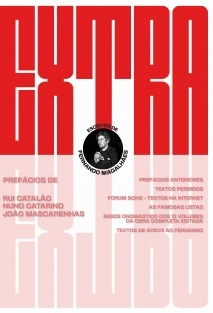
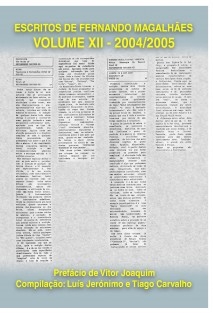
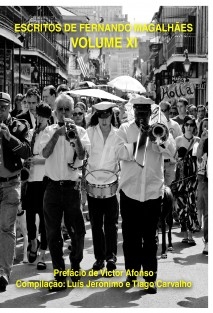
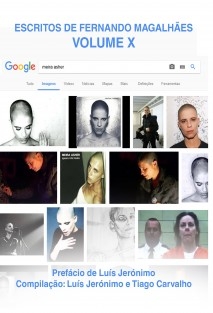

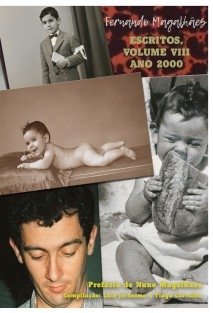
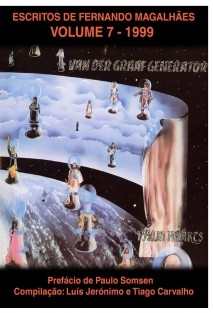
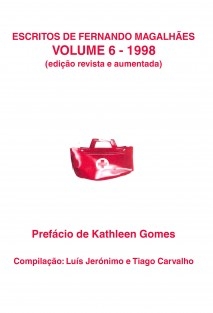
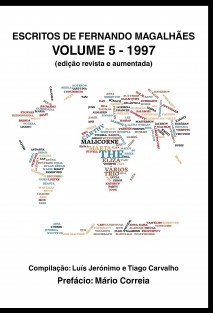

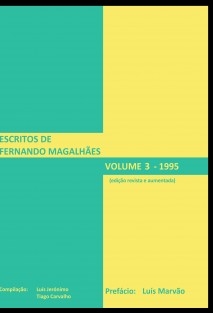



_Bubok.jpg)
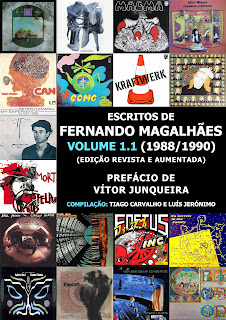





















Sem comentários:
Enviar um comentário